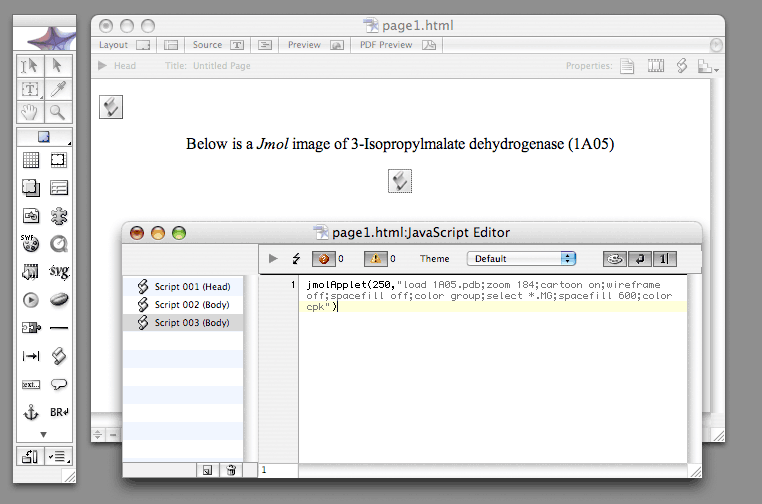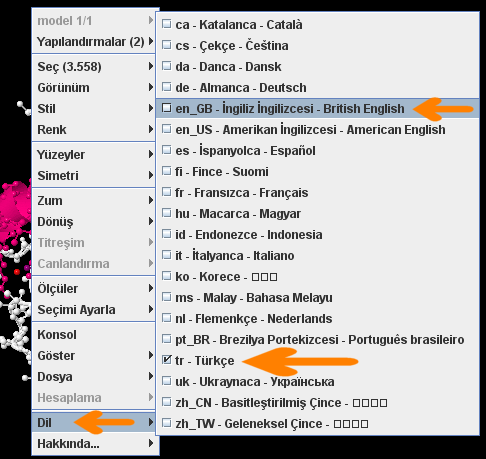

# should be called prior to jmolApplet() and should incorporate some sort of

# allows control over the sync ID via javascript. # new Jmol.js feature: jmolGetSyncId() jmolSetSyncId(id) # sync jmolApplet2 OFF # turns sync off for an applet ON A DIFFERENT PAGE # sync > "set echo top left echo OK" # sends OK to top left of all OTHER applets
JMOL SCRIPT COMMANDS DRIVERS
# sync jmolApplet1 #syncs this applet with jmolApplet1 both as drivers However, with the applet you do not have the feedback of the script command. # sync * # synchronize all applets as drivers Scripting commands are the same under the applet as under the Jmol application. # (optional) a unique string of digits - brackets included This feature is important for cross-frame synchronization only. # syncId is not given, then the ID for the page containing the controlling applet # number that identifies the page containing the controlling applet. # along with an optional bracketed sync group identifier - generally a random # Applets are identified by appletId (jmolApplet0, for instance) # other applets directly, without the intervention of JavaScript. # In addition, the sync command allows ANY command to be sent to one or more In addition, you can now tie a mouse action to a script of your choice, and Jmol will insert into that script the variable names X, Y, DELTAX, DELTAY, TIME, and MODE. These commands allow customized connections between user mouse actions and Jmol actions. Move one with the mouse, and the other moves as well. org/jmol/console/ScriptEditor.java:107 msgid Jmol Script Editor msgstr. Jmol 11.9.9 introduces two new commands, BIND and UNBIND. # The sync command allows two or more applets to be synchronized in # new feature: synchronization of applets using Jmol scripts: For example, from Applet A's console, type: Simply indicate the target applet as a second parameter to the script command. This operation is independent of the state of sync being ON or OFF.Īlso new in Jmol 11.6, you can use the Jmol math script() function to get information from another applet. Starting with Jmol 11.6, you can also use the script command with the APPLET option to send scripts to one or more applets.
JMOL SCRIPT COMMANDS FULL
In addition, you can specify the applet by its extension, "A" or "B", or by its full name, "jmolAppletA" or "jmolAppletB" in this case. Rotate X, Y, Left, Unmodified Translate X, Y, Ctrl-Right, Command Rotate Z, Shift-Right, Shift-Command Zoom, Shift-Left, Shift Slab Plane, Ctrl-Left. Other options include "*" (all synchronized applets)Īnd "." (only this applet, if it is synchronized). The ">" means "all other synchronized applets". Which would cause only the applet on the top to do the controlling, but allowed the bottom applet to be moved independently of that control.Īlso, if you open a console on one, you can give commands to the other using something like: Var s = (syncing ? 'sync * on sync * "set syncMouse true"': 'sync * off') Var syncing = document.getElementById("drive").checked

Once the checkbox is checked, going to either one controls the other. The two applets are jmolAppletA and jmolAppletB. This means that commands that actually make changes to the position or identity of atoms in the.
JMOL SCRIPT COMMANDS HOW TO
This page demonstrates how to synchronize applets in Jmol. Jmol is for the most part a molecular viewer, not an editor.


 0 kommentar(er)
0 kommentar(er)
